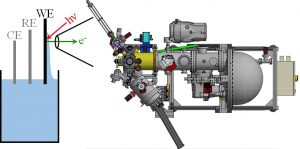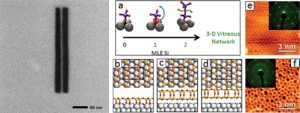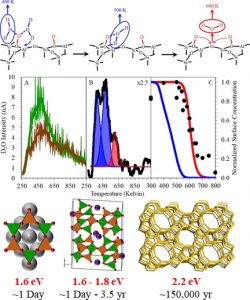
NAP-XPS apparatus coming to UCF’s MCF Fall 2021 and a conceptual drawing for how we plan to use the instrument provide state-of-the-art fundamental insights into the surface dynamics of practical electrocatalyst materials.
NAP-XPS for in situ/operando characterization of surfaces under practical reaction conditions:
- The need for improved access to direct observation of dynamic changes in surface characteristics under practical reaction conditions is made increasingly clear by numerous operando/in situ studies being published with increasing frequency over the past decade(s). Dr. Kaden has successfully garnered funds needed to introduce a shared-use XPS apparatus with established capacities for direct, chemical-state characterization of materials in all-three phases of matter within environments ranging from UHV to near-ambient pressure atmospheres. The Kaden group plans to make heavy use of this apparatus both individually and collaboratively in support of colleagues both internal and external to UCF. Two areas of particular interest to the group are in situ characterization of internally developed heterogeneous catalysts and the development of equipment modifications needed to allow for operando characterization of electrochemical interfaces fundamentally important to ongoing collaborative efforts with other groups at UCF.

Previous work has shown molybdenumnitride catalysts to outperform industry standard hydrotreatment catalysts for both overall activity and long-chain selectivity during hydrodenitrogenation of crude oil contaminants (left). We will make thin-film analogues of various nitride phases to better develop the fundamental understanding of these processes at the nitride interface (right).
MoN thin-films for HDN reactions:
- The removal of undesireable contaminants is a key first step in all refinement processes. While a current dependence on non-renewable fossil fuel resources has lead to industry-driven optimization of hydrotreatment catalysts tailored to desulfurization, it is known that the same materials are not optimal for denitrogenation. Depending on the composition of crude future resources (i.e. biomass), denitrogenation has potential to become increasingly relevant to fuels and chemicals production depending on the N:S abundancy ratio of future feed-stocks. For example, previous studies of high surface-area powders suggest delta-phase MoN to be a promising material for HDN reactions involving simple N-containing hydrocarbons. The aim of our work is to create suitable phase-dependent molybdenum nitride thin-films sufficient to allow for detailed structural-chemical surface-science studies neccesary to better understand and explain why such interfaces offer improved activity and long-chain product selectivity.

(Left) FIB technique that will be used to pattern Ru(0001) nanowires epitaxially grown on c-axis sapphire. (Right) Structure variable ultra-thin silicates that will be grown directly over the nanowires via physical vapor deposition within UHV.
Highly Crystalline Materials for High Transport Nanojunctions:
- As the scale of circuitry elements continues to decrease, increased resistance, especially through interconnect nodes represents a key challenge for continued improvement of computational resources. At extremely small dimensions, atomic-disorder within the wires leads to enhanced scattering, and, thus lower conductance. Working within a larger team creating small single-crystalline nanowires (~10 x 10 nm) via top down approaches and subsequently capping with compatibly crystalline (or not) insulating oxide materials, we are working to show direct evidence of significantly enhanced performance relative to traditional materials.

The importance of environment on thermal recombination of water from protonated aluminosilicates. (Times provide estimates for complete protonated site elimination under near equatorial daytime Lunar conditions).
Surface-Science studies of Model-Silicates used to simulate Regolith for Space-Weathering Studies:
- To model the surface of various bodies prevalent throughout the solar system, we make use of both thin and thick silicates (like those described above) with and without iron nanoparticles as a function of exposure to ice, high-energy particle impacts, electron, photon, and/or ion beam exposure to better understand how radiation effects lead to evolving chemistry at the solid-vacuum interface of asteroids and similar bodies. Our most recent work in this area has focused on the water-evolving chemistry of protonated Al-O-Si sites common to feldspars making up the majority of the Lunar surface.
